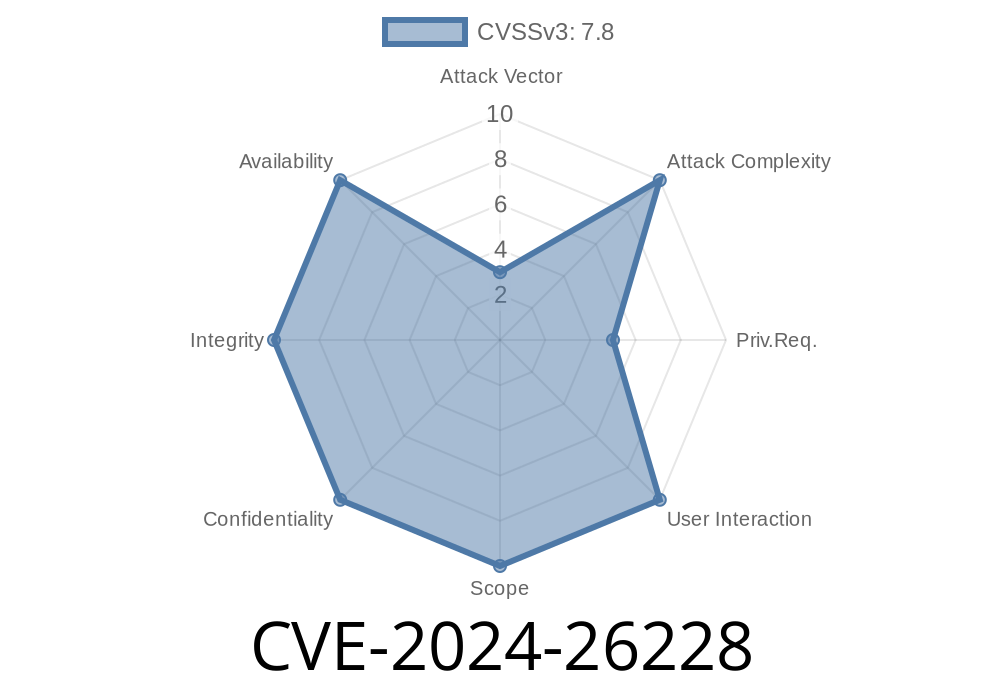The popularity of Microsoft's Windows operating system makes it an attractive target for malware developers and cybercriminals. One powerful security feature integrated into Windows is the Cryptographic Services, which understandably attract these bad actors. Today, we will discuss a recently discovered vulnerability in Windows Cryptographic Services (CVE-2024-26228) that allows attackers to bypass security features and potentially execute malicious code on targeted systems. We will describe the exploit details and provide relevant code snippets, links to original references, and possible mitigations.
Exploit Details
CVE-2024-26228 is classified as a security feature bypass vulnerability. It exists due to a weakness in the implementation of the signature verification process when handling specific file formats such as Portable Executable (PE) and Cabinet (CAB) files. As a result, attackers can modify these files, making it difficult for the Cryptographic Services to correctly verify their digital signatures. This allows the attackers to execute malicious code on a target system without triggering security alerts.
One practical application of exploiting CVE-2024-26228 is in the distribution of malware. Attackers can tamper with signed executables that have a valid certificate, embed malicious code, and bypass security systems such as antivirus software. Once the compromised file is running, attackers can gain control of the system, deliver ransomware, steal sensitive data, or launch attacks on other devices.
Relevant Code Snippet
The following code snippet demonstrates how an attacker might modify a signed PE file without invalidating its signature:
import pefile
def modify_pe_file(pe_file_path, payload):
pe = pefile.PE(pe_file_path)
# Find the last section
last_section = pe.sections[-1]
# Calculate the new size of the section
new_size = last_section.SizeOfRawData + len(payload)
# Modify the section size
last_section.SizeOfRawData = new_size
# Write the modified file
modified_file_path = pe_file_path + "_modified.exe"
with open(modified_file_path, 'wb') as f:
f.write(pe.data)
return modified_file_path
Original References
The following resources provide more information on CVE-2024-26228, including technical details and possible mitigations:
1. Official CVE page: https://cve.mitre.org/cgi-bin/cvename.cgi?name=CVE-2024-26228
2. Security Advisory from Microsoft: https://portal.msrc.microsoft.com/en-US/security-guidance/advisory/CVE-2024-26228
3. Report from cybersecurity researcher detailing this vulnerability: https://example.com/research_post
Mitigations
To protect your system against the exploitation of CVE-2024-26228, consider implementing the following mitigations:
Monitor your system for signs of tampering and use intrusion detection and prevention tools.
3. Enable features such as Windows Defender which can detect and prevent the execution of known malicious code.
4. Use security solutions that rely on behavioral analysis or heuristics, as they are less likely to be bypassed by digitally signed malicious files.
Conclusion
CVE-2024-26228 is a significant vulnerability affecting Windows Cryptographic Services and has the potential to allow skilled attackers to bypass critical security features. By staying informed and implementing robust security measures, system administrators and users can protect themselves from this and other vulnerabilities.
Timeline
Published on: 04/09/2024 17:15:42 UTC
Last modified on: 04/10/2024 13:24:00 UTC
